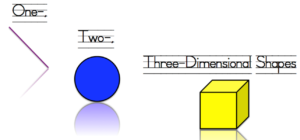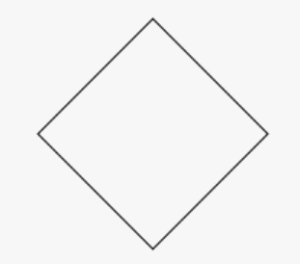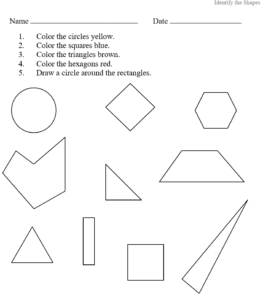MAFS.K.G.1.2: Correctly name shapes regardless of their orientations or overall size.
Cognitive Complexity Level: 1-Recall
[divider] [/divider] Students are able to…
- Name flat shapes (two-dimensional) in their environment regardless of their size.
- Name flat shapes (two-dimensional) in their environment regardless of their orientation.
- Name solid shapes (three-dimensional) in their environment regardless of their size.
- Name solid shapes (three-dimensional) in their environment regardless of their orientation.
[divider] [/divider] Students are able to…because teachers:
- Provide opportunities for students to explore flat shapes and solid shapes.
- Have students identify different flat shapes and solid shapes in the world around them.
- Provide different orientations of flat and solid shapes for students to identify the shapes.
- Help students realize that size does not affect the shape itself.
[divider] [/divider] Questions to ask students:
- Ask: What is the name of the below shape? How do you know?
- Sample answer that indicates understanding: It is a square. I know because it has 4 sides that are the same length. It is just turned.
- Ask: What is the name of the shape?
- Sample answer that indicates understanding: Cube because he has all the same faces.
[divider] [/divider] Additional Resources:
Additional in depth content knowledge
[divider] [/divider] Sample Formative Assessment Tasks:
[divider] [/divider] Resources/Tasks to Support Your Child at Home:
Have your child look for the flat shapes circles, squares, triangles and hexagons. Then have them draw a picture of the different examples of each shape they can find.
Have your child look for the solid shapes. Draw a picture of the different solid shapes they can find.



